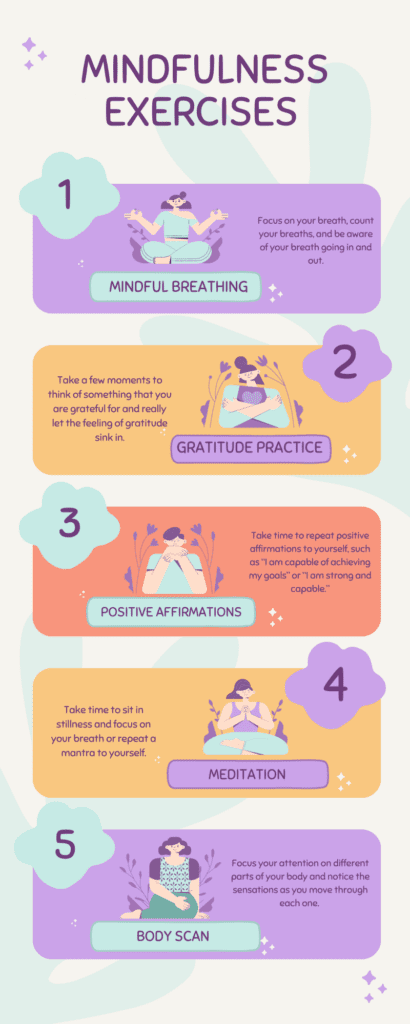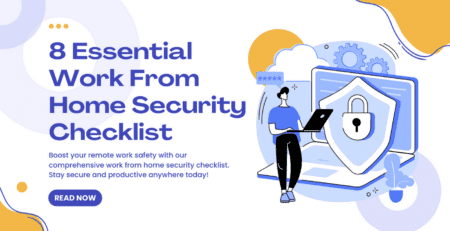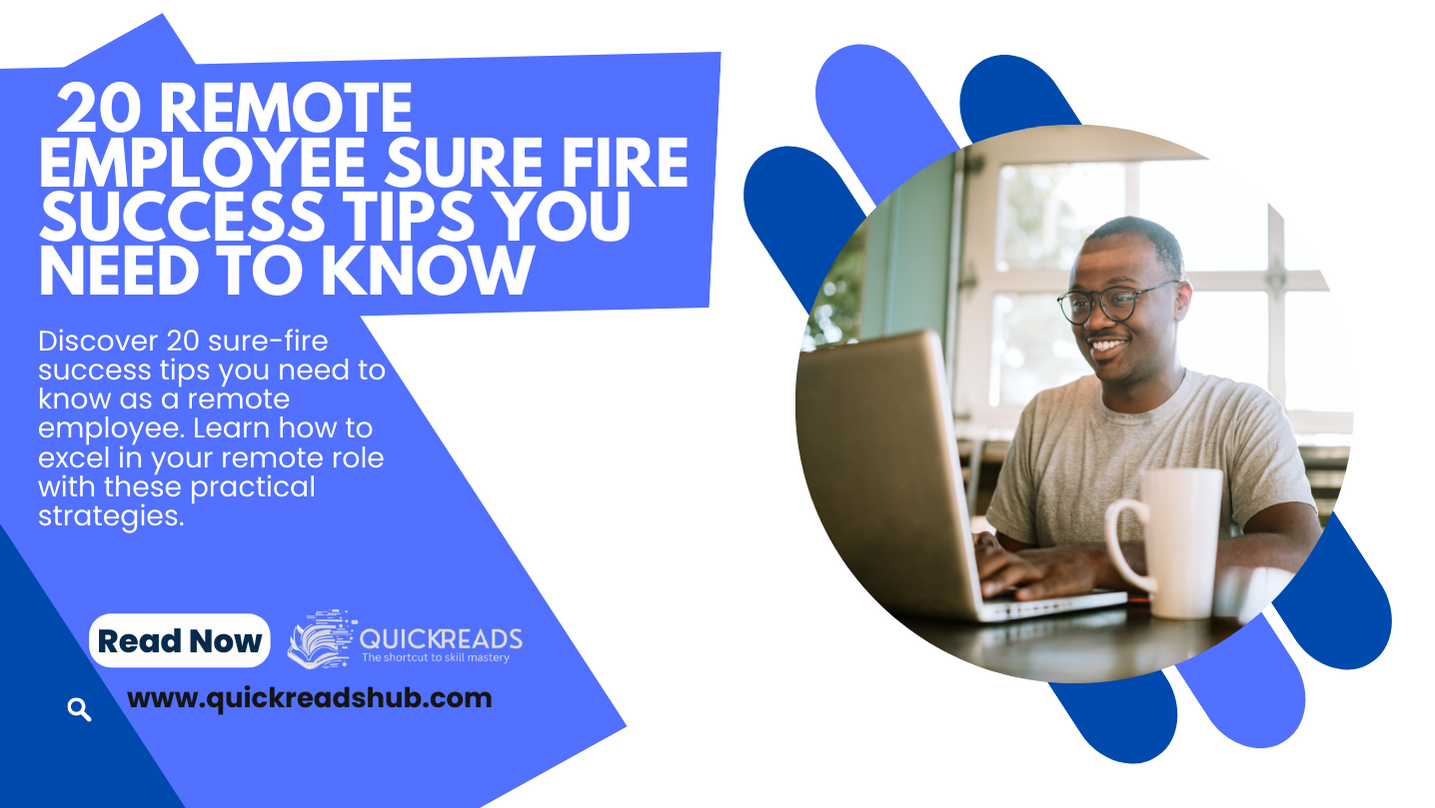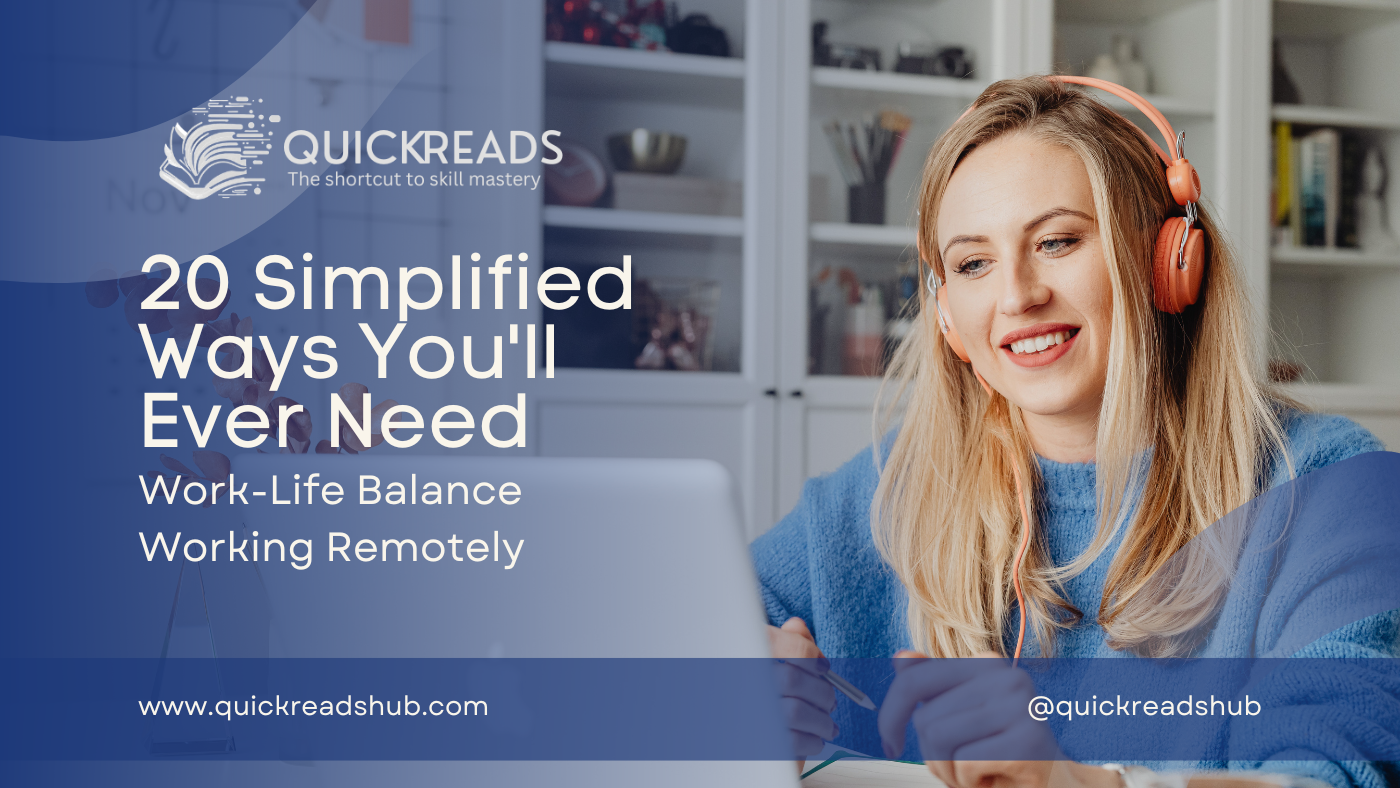It’s a bright Wednesday morning. You’re sitting in your favorite corner at home, ready to seize the day. Your workspace is primed, your to-do list is prepped, and you’re geared up to plunge into your tasks. But then, your dog kicks off a barking spree, your neighbor picks this moment to mow their lawn, and your kids are squabbling over the remote. Sounds like a typical day, doesn’t it?
This is where the magic of mindfulness steps in. At its core, mindfulness is about being wholly present in the moment. It’s about recognizing your thoughts, emotions, and surroundings without passing judgment. It’s about drawing a deep breath, zeroing in on the present, and releasing the whirlwind of chaos around you.
When it comes to remote work, mindfulness ascends to a whole new level of significance. It’s not merely about diminishing stress or amplifying focus. It’s about carving out a mental sanctuary where you can operate effectively and efficiently, despite the distractions and hurdles of working from home.
In this blog post, we’re going to delve into the concept of Mindfulness At Work and how it can revolutionize your remote work journey. So, grab your coffee, settle into a comfy spot, and let’s dive in!
The Unique Challenges of Remote Work

Let me tell you a story. A few years ago, I decided to take the plunge and transition to full-time remote work. I was thrilled at the prospect of ditching the daily commute and working in my pajamas. But, as I soon discovered, remote work wasn’t the utopia I had imagined.
The Isolation Station
One of the first challenges I faced was isolation. Working from home meant I was alone most of the day. I missed the casual chats by the water cooler, the shared laughs over a colleague’s joke, and even the simple act of saying “good morning” to my team. I felt disconnected, and it began to affect my mental health.
Balancing the Scales
Another issue was maintaining a work-life balance. When your home is your office, it’s easy to blur the lines between work and personal life. I found myself checking emails at all hours and working late into the night. The boundaries I had set were slowly eroding, and my personal life was taking a hit.
Home Sweet Office?
Then there were the distractions. At the office, it was easy to focus on work. At home, not so much. There was always a chore that needed doing, a TV show that tempted me, or a family member who needed my attention. Staying focused and productive became a daily struggle.
These are just a few of the challenges that remote workers face. But don’t worry, it’s not all doom and gloom. In the next section, we’ll explore how mindfulness can help us navigate these challenges and thrive in a remote work environment. So, stay tuned!
The Role of Mindfulness in Remote Work
In the hustle and bustle of the digital age, our minds are often cluttered with countless thoughts, worries, and tasks. This mental noise can be particularly challenging when working remotely, where the boundaries between work and personal life can blur, leading to stress, burnout, and decreased productivity. This is where mindfulness comes into play.
Mindfulness, the practice of intentionally focusing on the present moment without judgment, has been shown to have numerous benefits in the context of remote work. It can help us manage stress, improve focus, enhance emotional intelligence, and promote overall well-being.
Addressing Remote Work Challenges Through Mindfulness
- Reducing Stress and Anxiety: Remote work can often lead to increased stress and anxiety due to factors like isolation, lack of structure, and overwork. Mindfulness helps us to acknowledge these feelings without judgment, allowing us to manage them more effectively.
- Improving Focus and Productivity: With distractions just a room away, maintaining focus can be a challenge in a remote work setup. Mindfulness exercises, such as mindful breathing or meditation, can train our minds to stay focused on the task at hand, thereby improving productivity.
Enhancing Work-Life Balance: Mindfulness can help us set clear boundaries between work and personal life. By being fully present in what we’re doing, whether it’s working on a project or spending time with family, we can achieve a better work-life balance.
Ready to Excel in Your Remote Career?
Swap your office attire for your favorite swimwear and dive into our Daily Growth Booster Elixir! This isn’t just another newsletter – it’s your personal guide to thriving as a remote worker. We deliver unique tips, insightful book summaries, and handpicked recommendations straight to your inbox. No jargon, no clutter, just the essence of success. Embark on your journey to personal growth today! It’s completely FREE and requires NO DIPLOMA! Join Now and start transforming your work-from-home experience!

Scientific Studies on Mindfulness in Remote Work
While I’m currently unable to provide the latest studies due to a temporary issue, previous research has consistently shown the positive impact of mindfulness in the workplace. For instance, a study published in the Journal of Business and Psychology found that mindfulness can reduce emotional exhaustion and improve job satisfaction. Another study in the Journal of Occupational Health Psychology reported that mindfulness can decrease stress and enhance resilience in the workplace.
In the context of remote work, while specific studies might be limited, the benefits of mindfulness in managing stress, improving focus, and promoting well-being are well-documented and can be applied to remote work scenarios.
Remember, mindfulness is not a one-size-fits-all solution, and it’s essential to find practices that suit your individual needs and preferences. Whether it’s starting your day with a short meditation, taking mindful breaks during the day, or simply taking a moment to breathe and ground yourself amidst the chaos, every step towards mindfulness counts.
In the next section, we’ll delve deeper into the benefits of mindfulness for remote workers, complete with personal stories and case studies. Stay tuned!
Benefits of Mindfulness for Remote Workers

In the realm of remote work, the benefits of mindfulness are manifold. It’s not just about stress reduction, although that’s a significant part of it. Mindfulness can also enhance focus, improve work-life balance, and boost productivity. Let’s delve into these benefits in more detail.
Stress Reduction
One of the most well-documented benefits of mindfulness is its ability to reduce stress. A study published in the Journal of Occupational Health found that mindfulness-based stress reduction programs can significantly decrease stress levels among employees1. For remote workers dealing with the challenges of isolation, distractions, and blurred work-life boundaries, this can be a game-changer.
Improved Focus
Mindfulness can also help remote workers improve their focus. A study conducted by the University of Washington found that mindfulness training improved workers’ attention and quality of work. In a remote work setting, where distractions can be just a room away, this can be incredibly beneficial.
What I experienced
A few years ago, I transitioned to remote work. The freedom was thrilling, but I soon found myself grappling with distractions and stress. My productivity dipped, and my sanctuary, my home, felt more like a pressure cooker.
Then, I discovered mindfulness. I began with just five minutes of meditation daily, focusing on my breath. It was challenging, but I persisted. Gradually, I noticed changes. My focus sharpened, stress levels dropped, and I started enjoying my work more.
The most significant shift was in my work-life balance. Mindfulness helped me establish clear boundaries between work and personal time. I could disconnect from work, something I had struggled with earlier. My home returned to being my peaceful retreat.
Mindfulness wasn’t an instant solution, but it equipped me with the tools to handle remote work challenges. It made me resilient, focused, and more productive. My journey with mindfulness has been rewarding, and I believe it can benefit other remote workers too.
Better Work-Life Balance
Work-life balance can be particularly tricky for remote workers. Without the physical separation of an office, work can easily seep into personal time. Mindfulness can help remote workers set clearer boundaries and be more present in their off-work hours, leading to a better work-life balance.
Enhanced Productivity
Finally, mindfulness can boost productivity. A study published in the Journal of Management found that mindfulness can enhance job performance3. By helping remote workers manage stress, improve focus, and maintain a healthy work-life balance, mindfulness can ultimately make them more productive.
Common Misconceptions about Mindfulness in Remote Work
Let’s tackle some common misconceptions about mindfulness, particularly in the context of remote work. It’s important to dispel these myths so we can fully understand and appreciate the potential of mindfulness in enhancing our work-from-home experience.
Myth 1: Mindfulness is a Religious Practice
While mindfulness has roots in Buddhism, it’s not a religious practice. It’s a mental state achieved by focusing one’s awareness on the present moment, while calmly acknowledging and accepting one’s feelings, thoughts, and bodily sensations. It’s a universal practice that can be beneficial to anyone, regardless of religious or spiritual beliefs.
Myth 2: Mindfulness Takes Too Much Time
One of the most common misconceptions about mindfulness is that it requires a significant time commitment. However, even just a few minutes of mindfulness practice can make a difference. As we’ve discussed earlier, incorporating short mindfulness exercises into your daily routine can help manage stress and improve focus.
Myth 3: Mindfulness is Just About Relaxation
While mindfulness can certainly help you relax, it’s more than just a relaxation technique. Mindfulness is about developing a different relationship with your experiences, including stress, so you can make more intentional, thoughtful choices in your day-to-day life.
Myth 4: Mindfulness is a Cure-All Solution
While mindfulness offers numerous benefits, it’s not a panacea. It’s a tool that can help you manage stress, improve focus, and enhance well-being, but it’s not a substitute for professional help when dealing with serious mental health issues.
Myth 5: You Have to Clear Your Mind to Practice Mindfulness
Contrary to popular belief, mindfulness isn’t about emptying your mind or stopping your thoughts. It’s about becoming an observer of your thoughts without getting caught up in them.
To back up these points, various studies and articles have debunked these myths. For instance, an article from AXA Health titled “5 Myths about Mindfulness” provides a comprehensive explanation that dispels these common misconceptions. Another resource, an article from Mind Tools, also addresses these myths and offers a deeper understanding of what mindfulness truly is.
Remember, mindfulness is a personal journey. It’s about finding what works best for you. As we continue to explore the role of mindfulness in remote work, keep an open mind, and don’t let these misconceptions deter you from giving mindfulness a try.
Practical Ways to Practice Mindfulness in a Remote Work Setting
Mindfulness, the art of being fully present and engaged in the current moment, offers a plethora of benefits for remote workers. It aids in stress reduction, enhances focus, and promotes a healthier work-life balance. But how can one practice mindfulness in a remote work setting? Let’s explore some practical ways.
- Mindful Virtual Meetings: In the era of remote work, virtual meetings have become the norm. However, they can also be a source of stress and distraction. To bring mindfulness into these meetings, make it a habit to take a few deep breaths before the meeting starts. This can help you center yourself and be fully present during the meeting.
- Mindful Communication: Communication in a digital environment can often feel impersonal and disconnected. To counter this, practice mindful communication. This involves being fully present during your interactions, listening attentively, and responding thoughtfully.
- Mindful Breaks: Taking regular breaks is crucial in a remote work setting. But instead of just stepping away from your desk, try to make these breaks mindful. This could involve doing a quick meditation, taking a few deep breaths, or simply sitting quietly for a few minutes.
- Mindful Workspace: Your workspace plays a significant role in your productivity and stress levels. Try to create a workspace that promotes mindfulness. This could involve keeping your workspace clean and organized, adding elements that bring you joy, and ensuring you have a comfortable chair and desk.
- Mindful Eating: When working from home, it’s easy to fall into the trap of mindless eating. To practice mindfulness, make it a point to eat your meals without distractions. Pay attention to the taste, texture, and smell of your food. This not only enhances your eating experience but also helps prevent overeating.
- Mindful Exercise: Physical activity is crucial for our mental and physical health. Try to incorporate mindful exercises into your routine. This could involve yoga, tai chi, or simply going for a mindful walk where you pay attention to your surroundings and the sensation of your body moving.
- Mindful End of Day Ritual: Ending your workday mindfully can help you transition from work mode to relaxation mode. This could involve a simple ritual like shutting down your computer, cleaning your workspace, or doing a quick meditation.
By incorporating these practices into your remote work routine, you can reap the benefits of mindfulness and enhance your work-from-home experience. Remember, mindfulness is not about perfection, but about being present and engaged in the current moment. So, start small, be consistent, and watch your mindfulness journey unfold.
Mindfulness Tools and Resources for Remote Workers
How do we cultivate mindfulness at work? Well, just like any skill, it takes practice. And fortunately, there are plenty of tools and resources out there to help us on our mindfulness journey.
The following list is a curated selection of apps, books, and online resources that I’ve found particularly helpful in my own practice. These resources were chosen for their quality, accessibility, and relevance to the unique challenges of remote work. They offer a range of approaches to mindfulness, from guided meditations to educational articles, so you can find what works best for you. And best of all, they’re all resources you can access right from the comfort of your own home. So, without further ado, let’s dive in!
- Headspace: This is a popular mindfulness app that offers guided meditations on everything from managing stress to improving focus. It’s like having a personal mindfulness coach in your pocket.
- Calm: Another well-loved app, Calm provides a variety of mindfulness exercises, including guided meditations, sleep stories, and calming music. It’s a great tool for winding down after a long day of remote work.
- Insight Timer: This app boasts the largest free library of guided meditations and mindfulness exercises. It also includes a timer for those who prefer unguided meditations.
- “The Miracle of Mindfulness” by Thich Nhat Hanh: This book is a classic introduction to mindfulness. It offers practical advice on incorporating mindfulness into everyday activities.
- “Mindfulness: An Eight-Week Plan for Finding Peace in a Frantic World” by Mark Williams and Danny Penman: This book provides a step-by-step guide to mindfulness-based cognitive therapy, a clinically proven method for reducing stress and improving mental health.
- Mindful.org: This online resource offers a wealth of articles, guided meditations, and podcasts on mindfulness. It’s a great place to start if you’re new to mindfulness or looking to deepen your practice.
- UCLA Mindful App: Developed by the Mindful Awareness Research Center at UCLA, this app offers free guided meditations in English and Spanish.
Remember, practicing mindfulness is a personal journey. What works for one person might not work for another. So, feel free to explore these resources and find what resonates with you. And remember, the goal of mindfulness at work isn’t to eliminate all stress or distractions. It’s to develop a healthier relationship with them, so we can navigate the challenges of remote work with more ease and resilience.

In the next section, we’ll tackle some common misconceptions about mindfulness in remote work. Stay tuned!
The Limitations of Mindfulness at Work
Mindfulness is a powerful practice, but it’s not a panacea. It can help us manage stress, improve focus, and enhance our overall well-being. But it can’t solve all the challenges of remote work. For instance, it can’t eliminate the physical isolation that comes with working from home. It can’t replace the need for social interaction and collaboration. And it can’t make up for a poorly designed workspace or a lack of organizational support.
Moreover, mindfulness requires practice and commitment. It’s not something you can master overnight. And while it can help you become more aware of your thoughts and feelings, it doesn’t automatically change them. You might become more aware of your stress or anxiety, but that doesn’t mean you’ll be able to eliminate them completely.
Complementary Practices and Strategies
While mindfulness at work is a powerful tool, it’s not a one-size-fits-all solution. It’s like a piece of a puzzle, and to see the whole picture, we need to consider other pieces as well. Here are some complementary practices and strategies that can help you navigate the unique challenges of remote work:
- Regular Exercise: Physical activity is a great stress reliever. It releases endorphins, the body’s natural mood boosters. Plus, it can help you stay fit and healthy, which is especially important when you’re working from home and might be moving less.
- Healthy Eating: What we eat can significantly affect our mood and energy levels. Try to maintain a balanced diet rich in fruits, vegetables, lean proteins, and whole grains. And don’t forget to stay hydrated!
- Adequate Sleep: Sleep is crucial for our mental and physical health. It’s when our body repairs itself and our mind processes the events of the day. Make sure you’re getting enough quality sleep each night.
- Social Connections: Even though you’re working remotely, it’s important to maintain social connections. Regularly check in with your colleagues, friends, and family. You can use video calls, phone calls, or even just a quick text message.
- Continuous Learning: Keep your mind sharp and stay engaged in your work by continuously learning. This could be through professional development courses, reading relevant articles, or even just exploring a new hobby in your free time.
Remember, mindfulness at work is just one tool in your toolkit. By combining it with these complementary practices and strategies, you can create a more balanced and effective approach to managing the challenges of remote work.
So, let’s continue to explore the world of mindfulness at work, acknowledging its limitations, and embracing its potential. Because even with its limitations, mindfulness can still be a powerful ally in our remote work journey.
How to Cultivate a Mindfulness at Work Remote Culture
Alright, let’s dive into the world of mindfulness at work in a remote setting. As leaders, it’s crucial to foster an environment that encourages mindfulness. Not only does it benefit the individual, but it also creates a more harmonious and productive team.
Encouraging Mindfulness in a Remote Team
As a leader, your actions set the tone for your team. If you’re constantly stressed and rushing from one task to another, your team will likely follow suit. But if you’re calm, present, and mindful, your team will feel encouraged to adopt the same approach.
So, how can you encourage mindfulness in your remote team? Here are a few tips:
- Lead by Example: Practice mindfulness yourself and share your experiences with your team. This could be as simple as starting a meeting with a minute of silence to allow everyone to arrive mentally and physically.
- Provide Resources: Share resources on mindfulness, such as articles, books, and apps. Encourage your team to explore these resources and find practices that resonate with them.
- Create a Mindful Environment: Encourage practices that promote mindfulness, such as taking regular breaks, setting boundaries, and avoiding multitasking.
- Offer Training: Consider offering mindfulness training to your team. This could be in the form of workshops, courses, or regular mindfulness sessions.
- Encourage Open Dialogue: Create a safe space for your team to share their experiences with mindfulness. This could be in team meetings, one-on-ones, or a dedicated channel in your communication platform.
Case Study: Mindfulness at Work in Action
Google: Google has been offering mindfulness training to its employees for several years. The company has found that mindfulness can help employees reduce stress, improve focus, and increase creativity.
Aetna: Aetna is a large health insurance company that has been offering mindfulness training to its employees for over a decade. The company has found that mindfulness can help employees reduce stress, improve sleep, and increase productivity.
Aetna mindfulness at work case study
The Mayo Clinic: The Mayo Clinic is a large medical center that has been offering mindfulness training to its employees for several years. The clinic has found that mindfulness can help employees reduce burnout, improve communication, and increase compassion.
These are just a few examples of how mindfulness is being used in the workplace. Mindfulness can be a valuable tool for improving employee well-being and performance. Mindfulness is not a one-size-fits-all solution. It’s a journey, and every journey begins with a single step. So, take that step today and see where the path of mindfulness leads you.
In the next section, we’ll wrap up our discussion on mindfulness at work and provide some final thoughts and resources. Stay tuned!
Conclusion
Alright, let’s wrap this up! We’ve journeyed through the world of mindfulness at work, especially in the context of remote work. We’ve explored its importance, the unique challenges it addresses, and the tools and resources available to help us on this journey.
We’ve also debunked some misconceptions and acknowledged that mindfulness, while powerful, isn’t a magic bullet. It’s one piece of the puzzle in creating a healthier, more balanced, and productive remote work experience.
But remember, my friends, the journey doesn’t end here. Mindfulness is a practice. It’s something we cultivate over time. And the beautiful thing is, every moment gives us a new opportunity to be mindful.
So, whether you’re about to dive into a complex task, feeling the afternoon slump, or navigating a difficult conversation with a colleague, remember to pause. Take a deep breath. Bring your attention back to the present moment. This simple act can make a world of difference.
And hey, don’t forget to share your experiences! We’re all in this together. Let’s learn from each other, support each other, and grow together. After all, that’s what community is all about.
Further Reading:
Check out “Mindfulness At Work: A Practical Guide to Enhance Your Focus and Attention, Achieve Better Results (Doing Less!) and Improve Your Well-Being” by Nieves Rodríguez or “The Headspace Guide to Meditation and Mindfulness: How Mindfulness Can Change Your Life in Ten Minutes a Day” by Andy Puddicombe . Both offer practical tips and deeper insights into the practice of mindfulness at work.
Remember, mindfulness isn’t just something we do. It’s a way of being. And in the realm of remote work, it’s an unexpected breakthrough that’s here to stay.
So, here’s to mindfulness at work. Here’s to a more present, balanced, and fulfilling remote work experience. And here’s to you, for taking this step on your mindfulness journey. Keep going, my friends. The best is yet to come.
References:
- Kabat-Zinn, J. (1994). Wherever You Go, There You Are: Mindfulness Meditation in Everyday Life. Hyperion.
- Thompson, P. (2018). The Mindful Workday: Practical Techniques for On-the-Job Stress Relief and Success. Silver Lining Psychology.
- Headspace. (2023). The Headspace Guide to Mindfulness & Meditation. [Mobile application software]. Retrieved from https://www.headspace.com/
- American Psychological Association. (2012). Stress in America: Our Health at Risk. Retrieved from https://www.apa.org/news/press/releases/stress/2011/final-2011.pdf
- Goyal, M., Singh, S., Sibinga, E. M., Gould, N. F., Rowland-Seymour, A., Sharma, R., … & Haythornthwaite, J. A. (2014). Meditation programs for psychological stress and well-being: a systematic review and meta-analysis. JAMA internal medicine, 174(3), 357-368.
- Google. (2023). Google Workspace. Retrieved from https://workspace.google.com/
- Slack Technologies. (2023). Slack. [Mobile application software]. Retrieved from https://slack.com/
- Zoom Video Communications. (2023). Zoom. [Mobile application software]. Retrieved from https://zoom.us/
- Microsoft Corporation. (2023). Microsoft Teams. [Mobile application software]. Retrieved from https://www.microsoft.com/en/microsoft-teams/group-chat-software
- Calm. (2023). Calm. [Mobile application software]. Retrieved from https://www.calm.com/
- Insight Timer Pty Ltd. (2023). Insight Timer – Meditation App. [Mobile application software]. Retrieved from https://insighttimer.com/
- Ten Percent Happier Inc. (2023). Ten Percent Happier Meditation. [Mobile application software]. Retrieved from https://www.tenpercent.com/
- Smiling Mind. (2023). Smiling Mind. [Mobile application software]. Retrieved from https://www.smilingmind.com.au/
- Mindfulness Exercises. (2023). Mindfulness Exercises. Retrieved from https://mindfulnessexercises.com/
- Mindful. (2023). Mindful. Retrieved from https://www.mindful.org/
- Mindful Leader. (2023). Mindful Leader. Retrieved from https://www.mindfulleader.org/
- Mindful Workspaces & Co. (2023). Mindful Workspaces & Co. Retrieved from https://www.mindfulworkspace.co/
- Mindful Employer Canada. (2023). Mindful Employer Canada. Retrieved from https://www.mindfulemployer.ca/
- Mindful Employer UK. (2023). Mindful Employer UK. Retrieved from https://www.mindfulemployer.net/
- Mindful Employer Australia. (2023). Mindful Employer Australia. Retrieved from https://www.mindfulemployer.org/
- Mindful Employer New Zealand. (2023). Mindful Employer New Zealand. Retrieved from https://www.mindfulemployer.nz/
- 5 myths about mindfulness: https://www.axahealth.co.uk/health-information/mental-health/resilience/5-myths-about-mindfulness/





